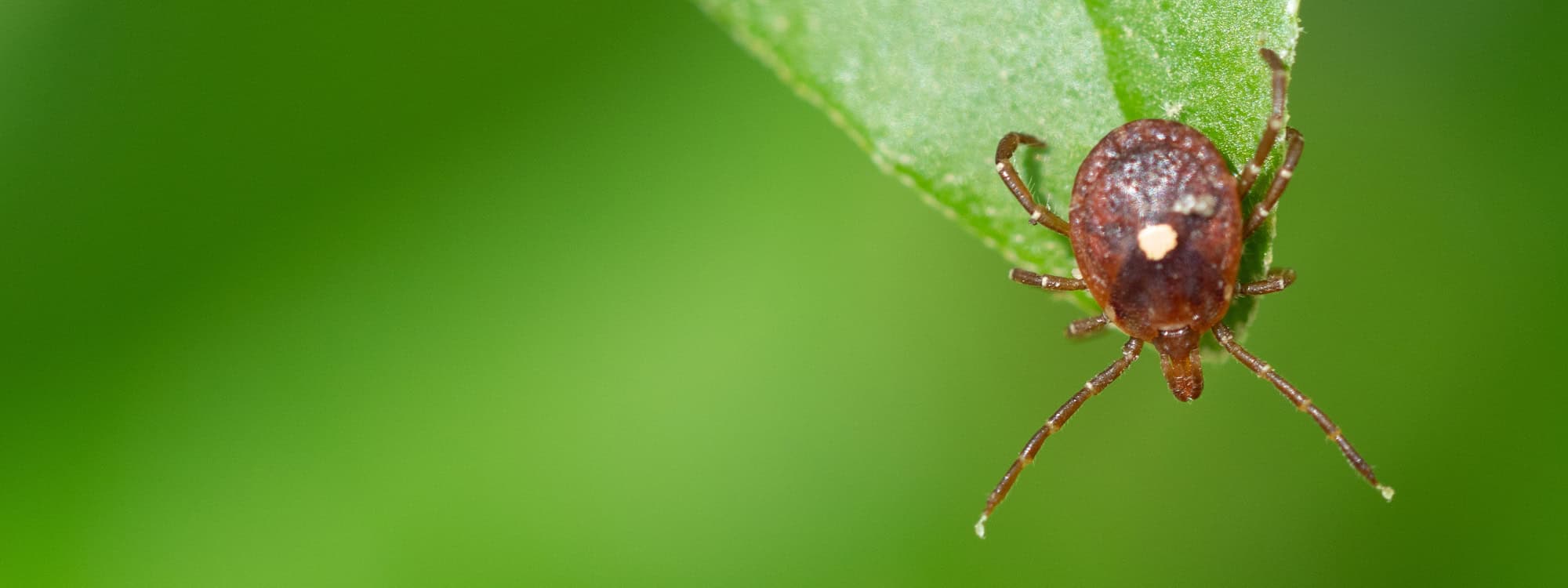Lone Star Ticks
Identification: Lone star ticks, are notable arachnids with a distinctive appearance. Unfed, they typically range from 2 to 4 mm in length. These ticks are easily identified by the prominent white or silver spot on the dorsal side of the adult females, resembling a star, hence their name. The body color is generally reddish-brown, and their oval-shaped bodies become engorged and more rounded after feeding. Their relatively large size and distinctive markings make them more conspicuous compared to some other tick species.
Habitat: Lone star ticks are commonly found in a variety of habitats including grassy areas, forests, and brushy or overgrown vegetation. They prefer environments with a mix of tall grasses and shrubs, which provide ideal conditions for questing. In particular, they are often encountered in areas with ample cover and access to potential hosts, such as fields, trails, and edges of wooded areas. Their adaptability allows them to thrive in both rural and suburban settings, where they can easily find hosts and suitable conditions for their life cycle.
Diet: As obligate blood feeders, Lone star ticks require blood meals to develop through each life stage. They are known to feed on a diverse range of hosts, including mammals, birds, and reptiles. The feeding process is crucial for their growth and reproduction, taking several days to complete. The blood meal provides essential nutrients that enable the tick to molt into the next developmental stage or reproduce. This requirement for blood makes them significant vectors of various tick-borne diseases.
Behavior: Lone star ticks exhibit a behavior known as “questing,” where they climb onto vegetation and extend their legs to latch onto passing hosts. This behavior is most common during warmer months, especially in spring and summer, when they are actively searching for hosts. They often remain in a waiting position on vegetation, using their extended legs to catch onto any host that brushes by. Lone star ticks are known to transmit pathogens such as Ehrlichiosis and Southern Tick-Associated Rash Illness (STARI). Their feeding behavior and potential for disease transmission make them a concern for both humans and animals.
Prevention: To prevent encounters with Lone star ticks, several strategies can be implemented. Regular tick checks after outdoor activities are essential, especially in areas where ticks are prevalent. Wearing light-colored clothing and applying tick repellents with DEET or other effective ingredients can help deter ticks. Keeping your yard well-maintained by mowing grass regularly and removing excessive brush can reduce tick habitats around your home. Additionally, treating pets with veterinarian-approved tick prevention products is crucial. Bug Free Muskoka’s Tick & Flea Control Service can further assist by providing targeted treatments to minimize tick presence in your yard and reduce the risk of tick-borne diseases.
Control: Effective control of Lone star ticks involves a combination of personal vigilance and environmental management. If ticks are found on pets or people, prompt removal using fine-tipped tweezers is recommended. Treatment of outdoor areas with acaricides, especially in high-risk zones, can help manage tick populations. Regular yard maintenance, such as mowing and clearing brush, along with using tick-prevention products on pets, is vital for long-term control. By following these strategies, you can significantly reduce tick encounters and protect yourself and your family from tick-borne illnesses.
If you have concerns about Lone star ticks, Bug Free Muskoka offers specialized solutions with their Tick & Flea Service. This service provides a comprehensive treatment plan to establish a protective barrier around your property, targeting key tick habitats and reducing the risk of tick infestations. By addressing high-risk areas and implementing effective preventive measures, Bug Free Muskoka helps ensure a safer outdoor environment and peace of mind for you and your family throughout the tick season.

